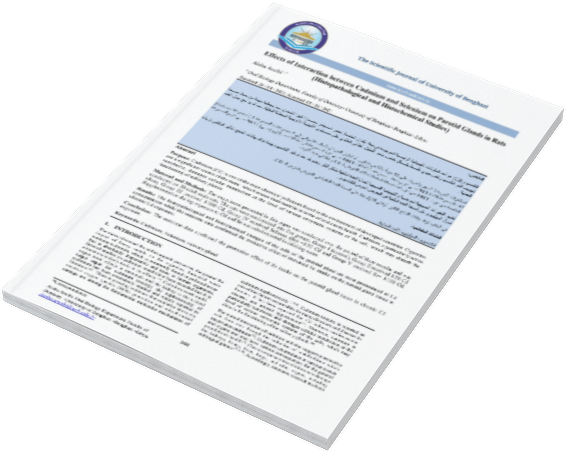Effects of Interaction between Cadmium and Selenium on Parotid Glands in Rats (Histopathological and Histochemical Studies)
DOI:
https://doi.org/10.37376/sjuob.v34i1.161Keywords:
salivary gland, Selenium, CadmiumAbstract
Purpose: Cadmium (Cd) is one of the main chemical pollutants found in the environment of developed countries. Cigarettes are a significant source of the metal, which makes them notable in terms of oral cavity health. Cadmium, a particularly active xenobiotic, damages cellular metabolism at the level of various enzymatic systems of the cell, which may disturb the functioning of salivary glands.
Material and Methods: The experiment presented in this paper was conducted over the period of three months and was conducted on 50 adult male rats. The rats were randomized into five groups. Group 1 (control), Group II received 1/50 Cd alone, Group III received 1/100 Cd, Group IV received Selinum (Se) +1/50 Cd and Group V received Se+ 1/100 Cd. Supplementation during exposure to Cd and Se was administrated in drinking water.
Results: The histopathological and histochemical changes of the cells of the parotid gland are most pronounced at Cd concentration while the outcome data confirmed the protective effect of increased Se intake on the parotid gland tissue in chronic Cd exposure.
Conclusion: The outcome data confirmed the protective effect of Se intake on the parotid gland tissue in chronic Cd exposure.
Downloads

Downloads
Published
How to Cite
Issue
Section
License

This work is licensed under a Creative Commons Attribution-NonCommercial-NoDerivatives 4.0 International License.


















